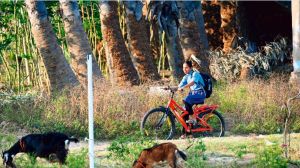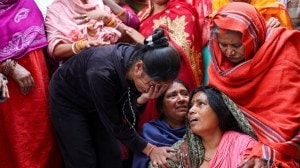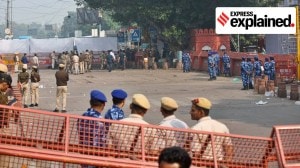Residents of Nepal’s Jajarkot, who have been sleeping on the streets or in relief camps since Friday’s earthquake as fear of aftershocks kept them out of their houses, were preparing to finally move back indoors on Monday when another quake struck. This one measured 5.6 on the Richter scale.
The streets of Jajarkot are still strewn with debris from Friday night’s quake, which killed 153 people – authorities on Monday revised the toll down from 157 citing duplication of some names – and injured 250. Several houses, mostly those belonging to the poor and built of rocks and mud, were completely destroyed in the 6.4-magnitude quake, while some bigger and stronger houses were left still standing with some visible cracks on the walls.

 Nepal Armed Police Force remove debris of a house just moments before fresh tremors were felt in Jajarkot on Monday. (Express photo by Asad Rehman)
Nepal Armed Police Force remove debris of a house just moments before fresh tremors were felt in Jajarkot on Monday. (Express photo by Asad Rehman)
On Monday night, hours after the latest quake hit at 4.30 pm, residents of all these houses – both the completely destroyed ones and those still standing – were crowding at a chaotic relief camp set up on a playground, scrambling for mattresses. No one dared sleep indoors for fear of more aftershocks, and were set to spend the night in the tents erected by authorities.
Story continues below this ad
Among those at the camp was 19-year-old Subarna K C, who belongs to an influential business family in the area. Sitting with her sister at the playground, she said: “Our house has seven rooms, but tonight we share this space with everyone here. The earthquake on Friday night didn’t affect our house, but the one today (Monday) has resulted in cracks in our house. So, my parents advised the younger ones to sleep here tonight.”
Subarna is a BBA student from a private college in Kathmandu. She and her sister, Isha, were preparing to spend the night in one of the many tents made of tarpaulin sheets in the camp. Most used foam sheets as mattresses, and there were around 40 other people in Subarna’s tent.
In the same tent was the family of 48-year-old Badra Bahadur Oli, a small-time farmer. Oli is there with his four children, aged between 10 months and 15 years, and wife Bhagwati.
 At a relief camp in a school playground in Nepal’s Jajarkot. (Express photo by Asad Rehman)
At a relief camp in a school playground in Nepal’s Jajarkot. (Express photo by Asad Rehman)
“We weren’t expecting to be here today. But the earthquake in the evening has scared us so much,” Bhagwati said.
Story continues below this ad
When Monday’s quake hit, there was chaos in Jajarkot, and people were seen running to find safe places. Fear was palpable on their faces as they feared a repeat of Friday night, or worse. The quake, which lasted just around four seconds, ended up not leading to any casualties. It did, however, increase fear of aftershocks among people.
Many were still mourning their loved ones in Jajarkot district, where the epicentre of Friday’s earthquake is located. As many as 101 people died in the district as a result of the quake.
Siddhi Ganesh Shah, 42, a journalist who has covered earthquakes most of his life, lost his mother, 66-year-old Indira Shah, on Friday. She was asleep in a room that collapsed completely when the quake hit, crushing her to death on the spot. Her body was taken out from under the debris two hours later.
Shah has covered the 2015 earthquakes in Nepal that killed around 9,000 people. “Earthquakes are a common occurrence because of the geography here. But I didn’t think I would lose someone to one,” he said.
Story continues below this ad
 At a relief camp in a school playground in Nepal’s Jajarkot. (Express photo by Asad Rehman)
At a relief camp in a school playground in Nepal’s Jajarkot. (Express photo by Asad Rehman)
The relief effort in Jajarkot has been hampered by the region’s hilly terrain.
Hari Bahadur, president of Jajarkot’s Red Cross Unit, said: “The relief material is not reaching those in the interiors because those distributing are mostly delivering it to places with roads.”
Some officers of Nepal’s Armed Police Force, which is conducting rescue operations, complained of a lack of proper machinery. “We don’t have the machine that detects human presence under debris, so it is difficult to find people. I rescued one woman after the finger on her ring reflected sunlight. When we pulled her out, she was dead. Other equipment is also lacking, but we have managed to take out everyone,” said an Army Police Force officer undertaking work clearing debris on Monday afternoon.
Harish Chandra Sharma, Assistant Chief District Officer for Jajarkot, said: “We have been working without stopping for three days. Things have been difficult, but the rescue and relief work is more coordinated this time.”
Story continues below this ad
“We were hopeful that there will be fewer people at relief camps today, but the fresh earthquake on Monday has changed that,” Sharma told The Indian Express.
An official in Jajarkot said that so far, 5,900 blankets and 7,052 tents have been received from various organisations.
The district, which is considered the most economically backward in Nepal and has a population of 1.89 lakh, has close connections to India. Many families in Jajarkot have sent a male member to Indian cities to work as daily wage labourers. Many of them had returned home following news of Friday’s quake.
Nara Bahadur Karki (50), who unsuccessfully contested the 2022 elections for the Jajarkot seat in the Lower House of Nepal’s Parliament, said the district is known as the “sorrow of Nepal”.
Story continues below this ad
“Along with being the most backward place in Nepal, it also sees earthquakes, epidemics, landslides and regular road accidents. The people of this district have suffered a lot, and Monday’s earthquake has left every house with some scars – some physical, and some mental,” said Karki, who reached Jajarkot on Monday from Kathmandu.

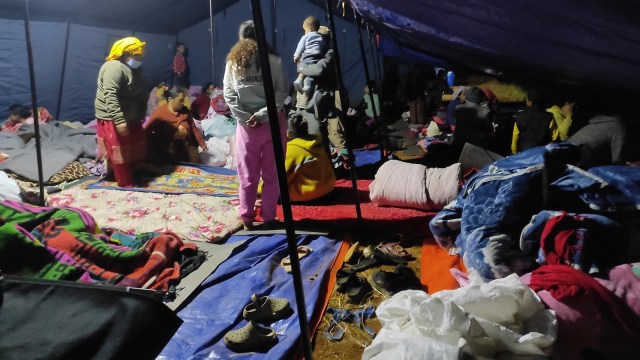

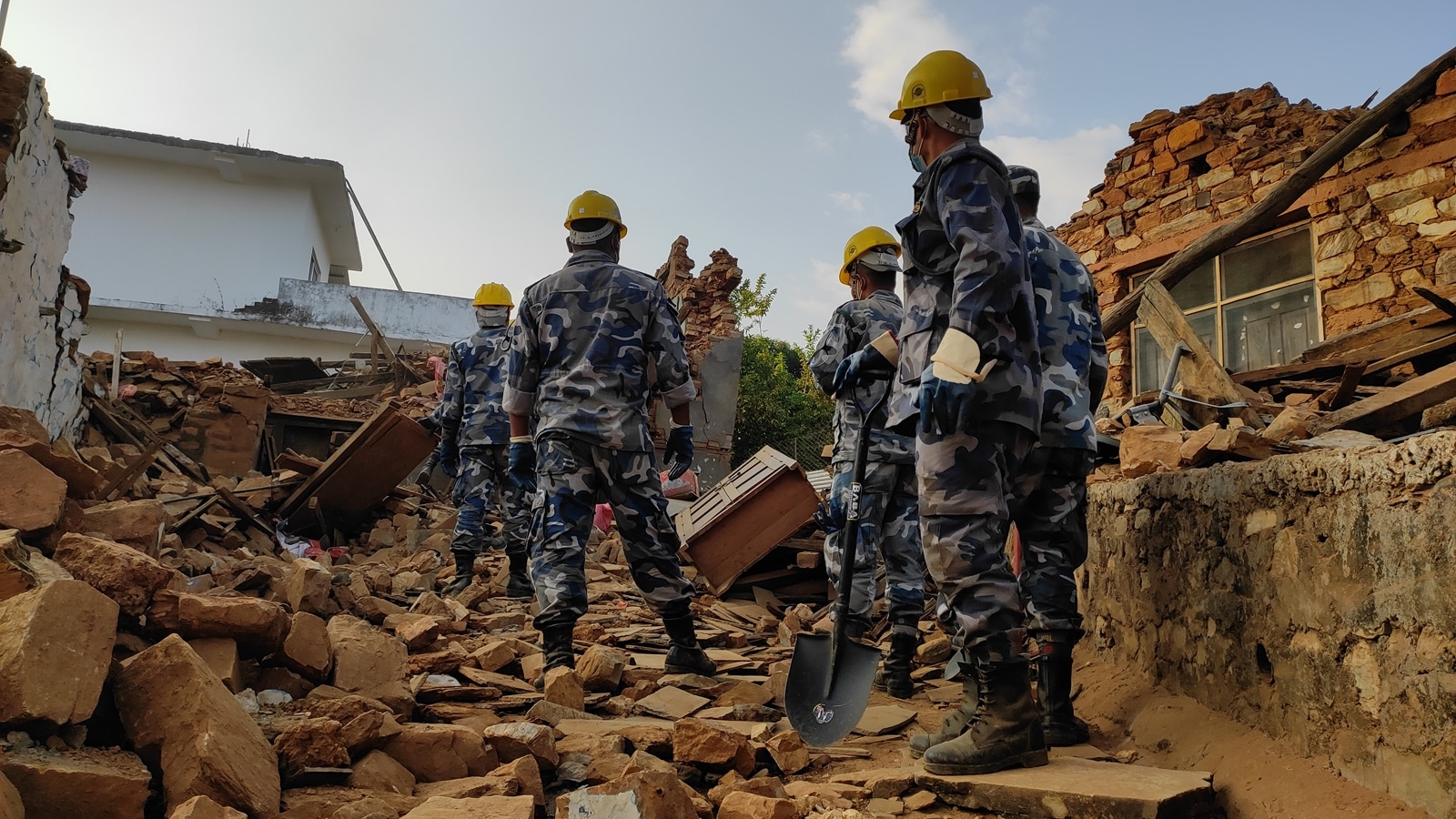 Nepal Armed Police Force remove debris of a house just moments before fresh tremors were felt in Jajarkot on Monday. (Express photo by Asad Rehman)
Nepal Armed Police Force remove debris of a house just moments before fresh tremors were felt in Jajarkot on Monday. (Express photo by Asad Rehman)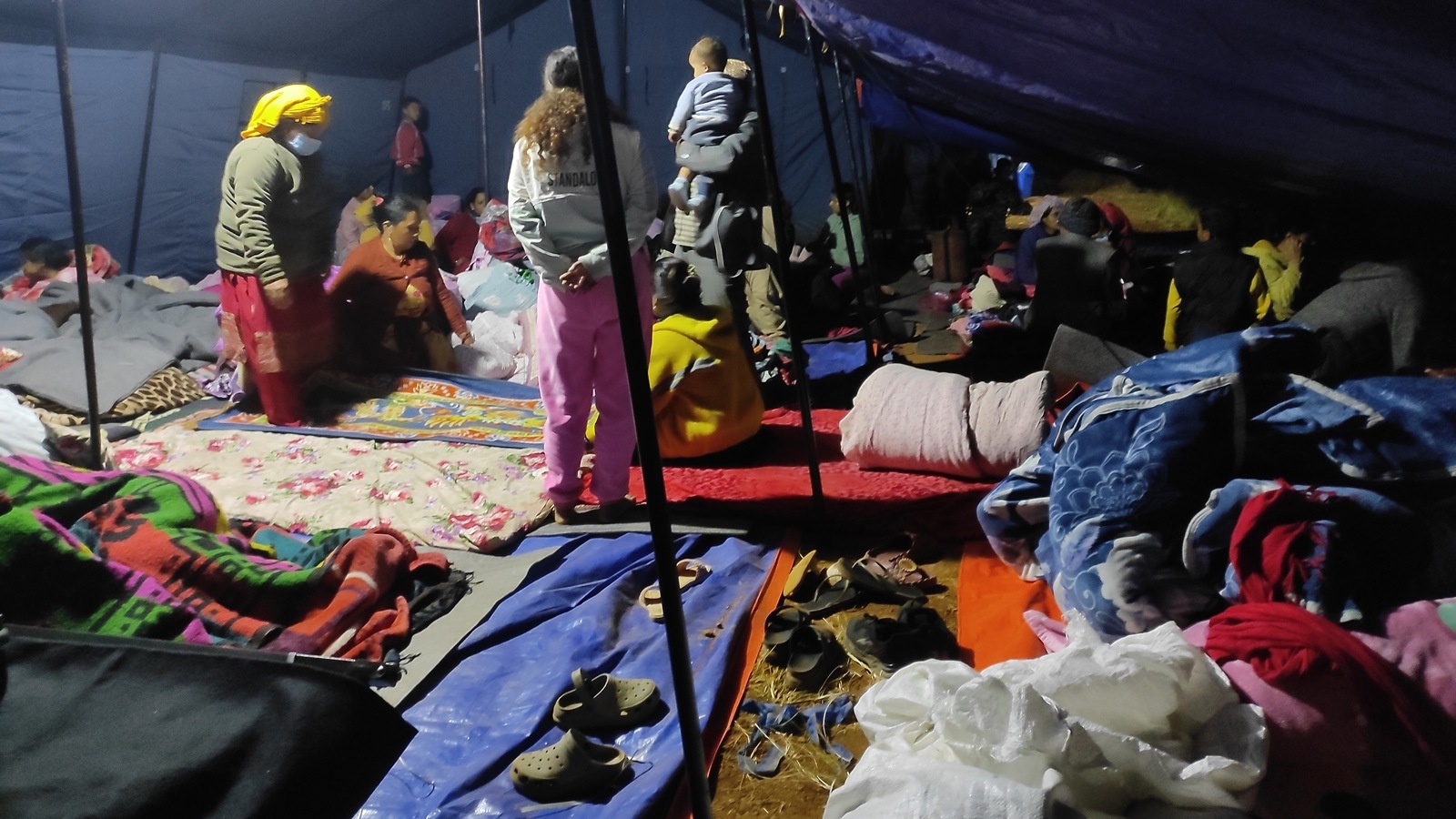 At a relief camp in a school playground in Nepal’s Jajarkot. (Express photo by Asad Rehman)
At a relief camp in a school playground in Nepal’s Jajarkot. (Express photo by Asad Rehman)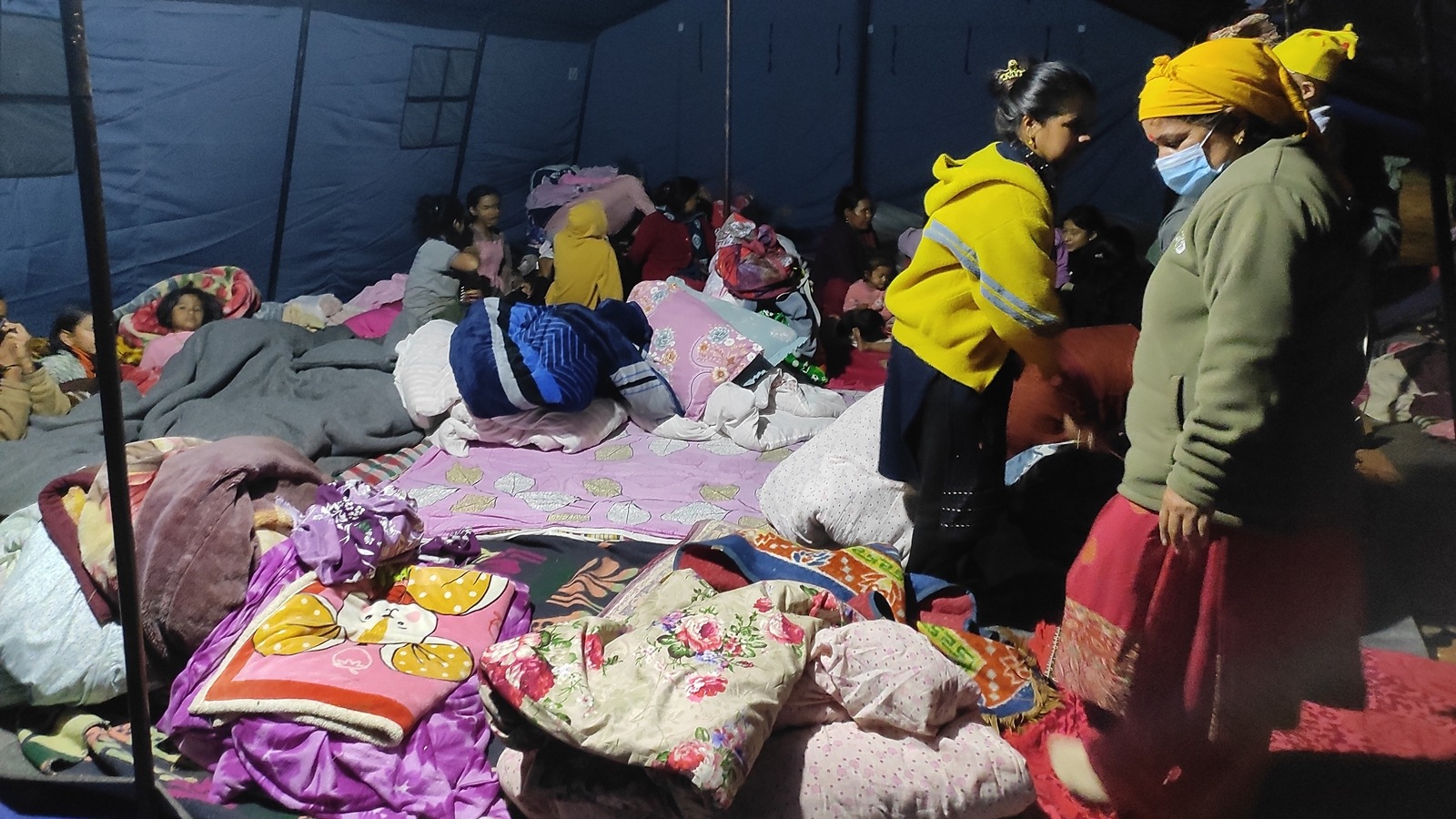 At a relief camp in a school playground in Nepal’s Jajarkot. (Express photo by Asad Rehman)
At a relief camp in a school playground in Nepal’s Jajarkot. (Express photo by Asad Rehman)






